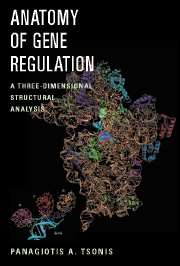Book contents
- Frontmatter
- Contents
- Preface
- 1 A General Introduction to 3-D Structures
- 2 The Higher Organization of the Genome
- 3 Structure of DNA and Telomeres
- 4 DNA Replication
- 5 Transcription in Prokaryotes
- 6 Transcription in Eukaryotes
- 7 Splicing
- 8 Modifications of mRNA
- 9 Compartmentalization of Transcription
- 10 Protein Synthesis
- 11 The Birth and Death of Proteins
- Further Reading and References
- Index
1 - A General Introduction to 3-D Structures
Published online by Cambridge University Press: 24 May 2010
- Frontmatter
- Contents
- Preface
- 1 A General Introduction to 3-D Structures
- 2 The Higher Organization of the Genome
- 3 Structure of DNA and Telomeres
- 4 DNA Replication
- 5 Transcription in Prokaryotes
- 6 Transcription in Eukaryotes
- 7 Splicing
- 8 Modifications of mRNA
- 9 Compartmentalization of Transcription
- 10 Protein Synthesis
- 11 The Birth and Death of Proteins
- Further Reading and References
- Index
Summary
PRIMER The three-dimensional structure of nucleic acids and proteins as it pertains to the mechanisms involved in gene regulation is the major focus of this book. Therefore, the reader will encounter many 3-D structures. The first chapter of the book presents the very basic ideas behind the three-dimensional aspects of biomolecules. The first part deals with the techniques used to determine 3-D structures. The presentation is virtually for the layperson. Then the basic structural elements found in proteins are examined. Having done this, we examine a particular 3-D structure (that includes both DNA and protein) presented with different modeling. This exercise will help you to become familiar with the different ways that scientists present their 3-D structures. We use different models because one aspect of structure and function can be better represented with one model, whereas another aspect is more suited to a different model.
This book deals with the three-dimensional aspects of gene regulation. The reader will encounter numerous three-dimensional structures, but this should not scare anybody away. Unfamiliar readers might think that interpreting these structures is difficult, but this is not true. All we need is a basic introduction into the three-dimensional aspects of proteins and nucleic acids and the way that it can be represented. The basic 3-D structure of a protein can be reduced to two elements: the alpha helix and the beta strand (and loops that connect them). The complicated 3-D structure of a protein is a combination of several of these elements.
- Type
- Chapter
- Information
- Anatomy of Gene RegulationA Three-dimensional Structural Analysis, pp. 1 - 5Publisher: Cambridge University PressPrint publication year: 2003



